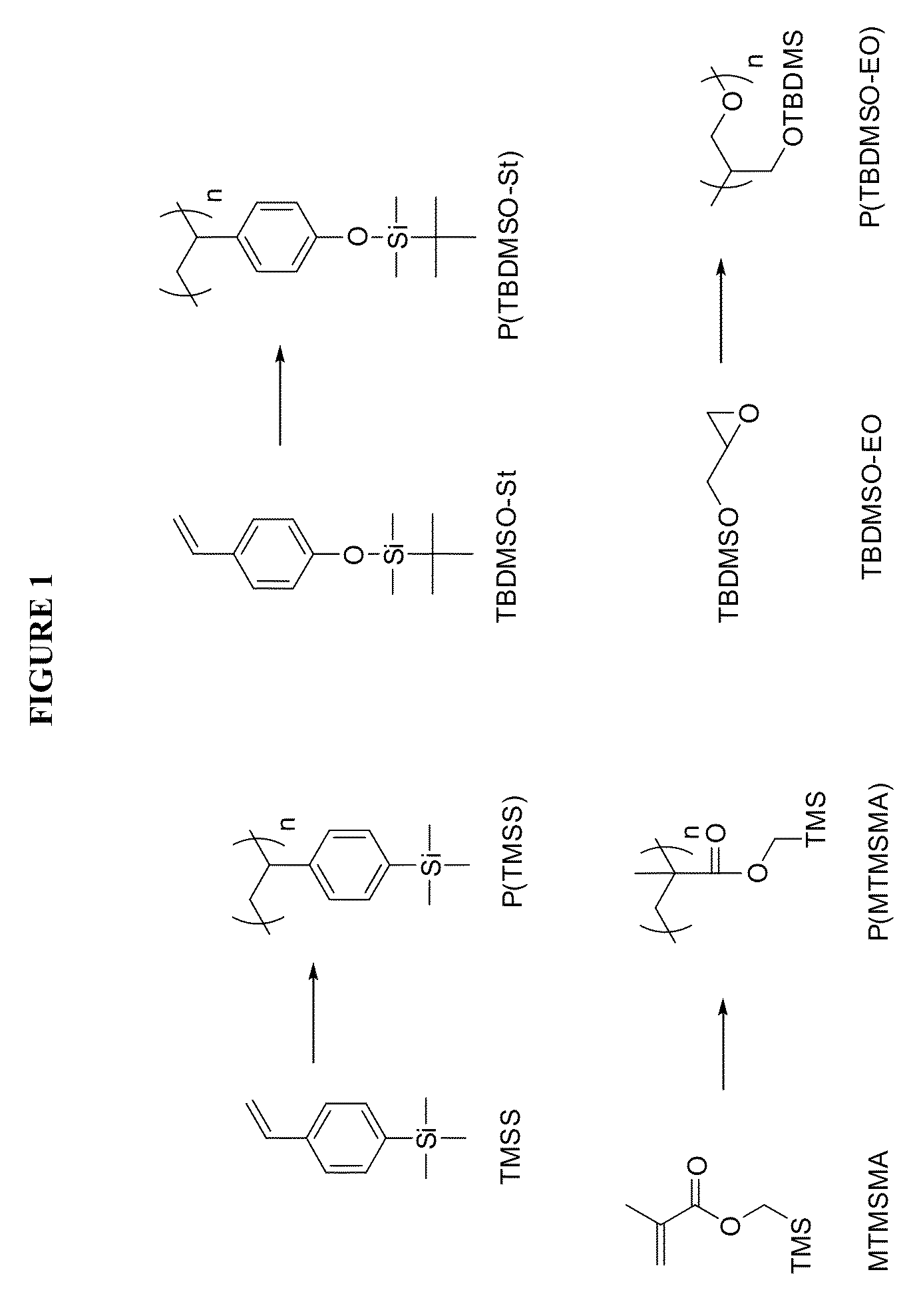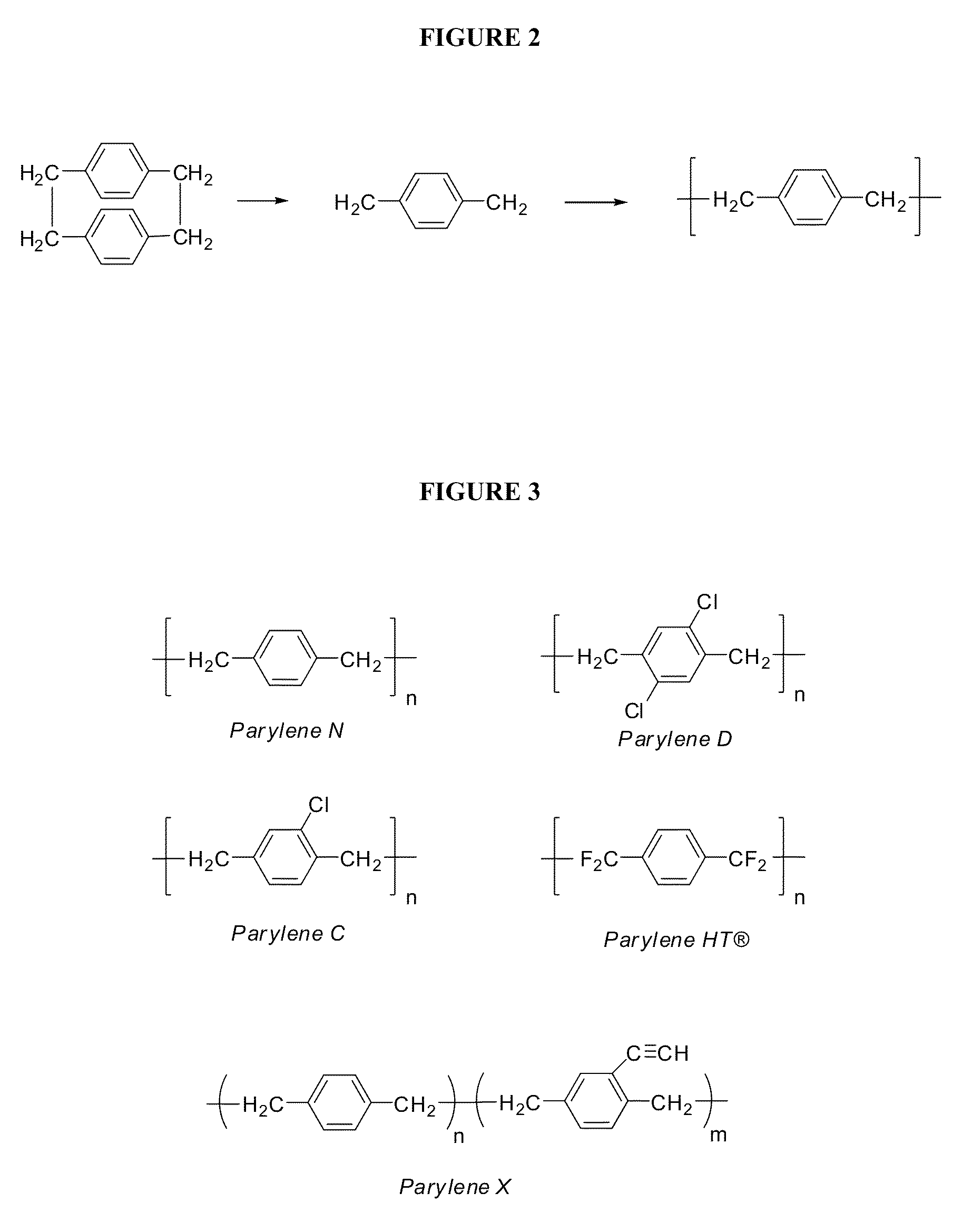Using chemical vapor deposited films to control domain orientation in block copolymer thin films
a technology of block copolymer and chemical vapor, which is applied in the field of vacuum deposited thin films, can solve the problems of prohibitive cost of electron beam lithography and resolution limits of optical lithography, and achieve high chi-parameters, high etch contrast, and good feature resolution
- Summary
- Abstract
- Description
- Claims
- Application Information
AI Technical Summary
Benefits of technology
Problems solved by technology
Method used
Image
Examples
example 1
Using Chemical Vapor Deposited Films to Control Domain Orientation in Block Copolymer Thin Films
[0110]One example of the method of using chemical vapor deposited films to control domain orientation in block copolymer thin films: 1) Surface energy neutralizing layer polymer is dissolved in toluene and spin coated, 2) Cross-linked at 250° C. for 5 minutes, 3) Washed with toluene 2 times, 4) Block copolymer is dissolved in toluene and spin coated, 5) Post apply bake at 110° C. for 1 minute, 6) The parylene containing treatment composition is vacuum deposited onto block copolymer with a thickness of approximately 150 nm forming a top coat, 7) Anneal the thin films at 170° C. for 18 hours, 8) Oxygen plasma etch the block copolymer with the following conditions: Pressure=90 mTorr, RF Power=80 W, ICP Power=100 W, O2 flow rate=5 standard cubic centimeters per minute (SCCM), temperature=15° C., time=35 seconds.
[0111]See FIG. 15 and FIG. 16.
example 2
An Alternate Procedure Using Two Chemical Vapor Deposited Layers to Control Domain Orientation in Block Copolymer Thin Films
[0112]One example of the method of using chemical vapor deposited films to control domain orientation in block copolymer thin films: 1) The parylene containing surface energy neutralizing layer is vacuum deposited onto the wafer, 2) Block copolymer is dissolved in toluene and spin coated, 3) Post apply bake at 110° C. for 1 minute, 4) The parylene containing treatment composition is vacuum deposited onto block copolymer with a thickness of approximately 150 nm forming a top coat, 5) Anneal the thin films at 170° C. for 18 hours, 6) Oxygen plasma etch the block copolymer with the following conditions: Pressure=90 mTorr, RF Power=80 W, ICP Power=100 W, O2 flow rate=5 standard cubic centimeters per minute (SCCM), temperature=15° C., time=35 seconds.
[0113]See FIG. 18 and FIG. 19.
PUM
| Property | Measurement | Unit |
|---|---|---|
| sizes | aaaaa | aaaaa |
| size | aaaaa | aaaaa |
| size | aaaaa | aaaaa |
Abstract
Description
Claims
Application Information
 Login to View More
Login to View More - R&D
- Intellectual Property
- Life Sciences
- Materials
- Tech Scout
- Unparalleled Data Quality
- Higher Quality Content
- 60% Fewer Hallucinations
Browse by: Latest US Patents, China's latest patents, Technical Efficacy Thesaurus, Application Domain, Technology Topic, Popular Technical Reports.
© 2025 PatSnap. All rights reserved.Legal|Privacy policy|Modern Slavery Act Transparency Statement|Sitemap|About US| Contact US: help@patsnap.com



